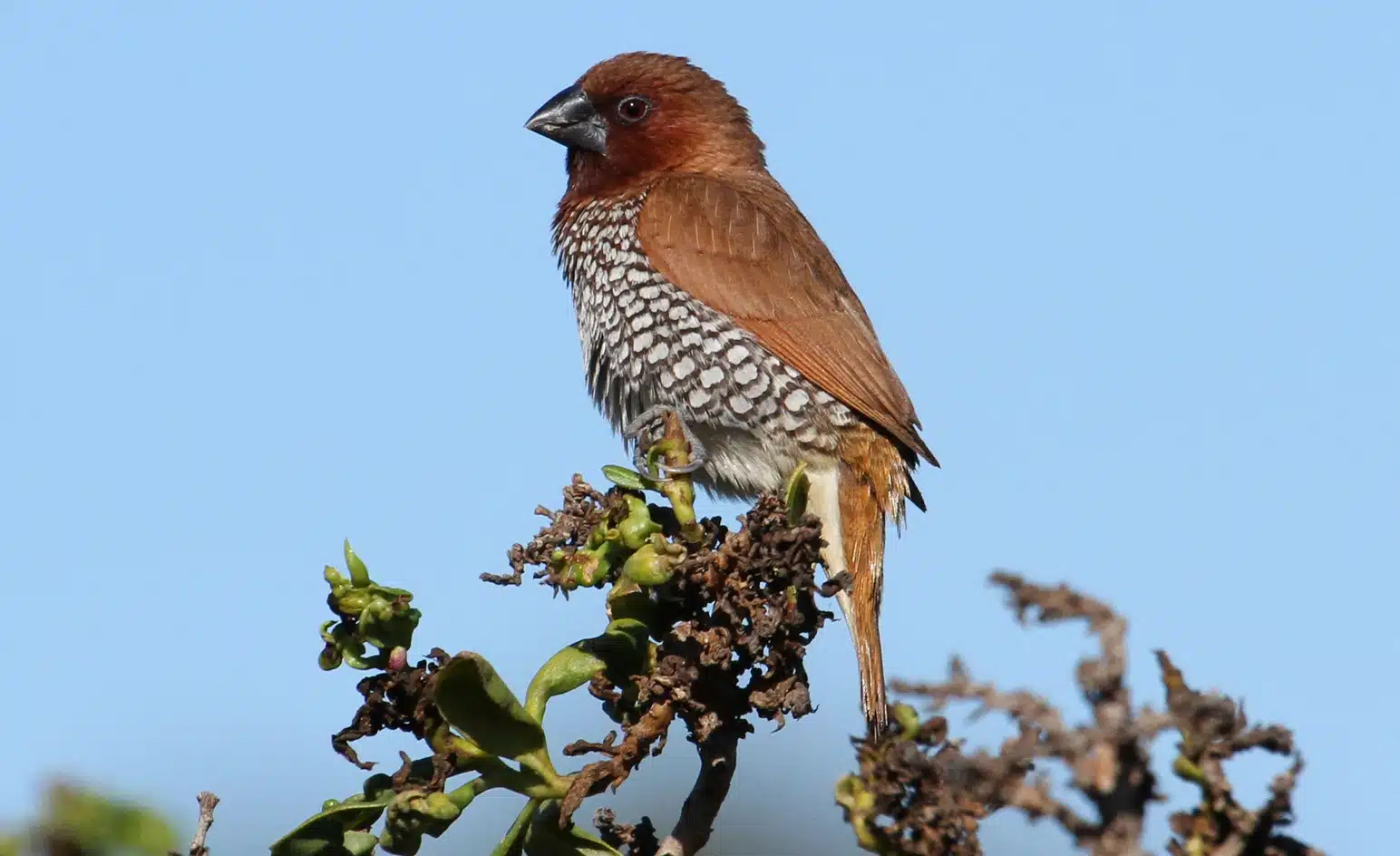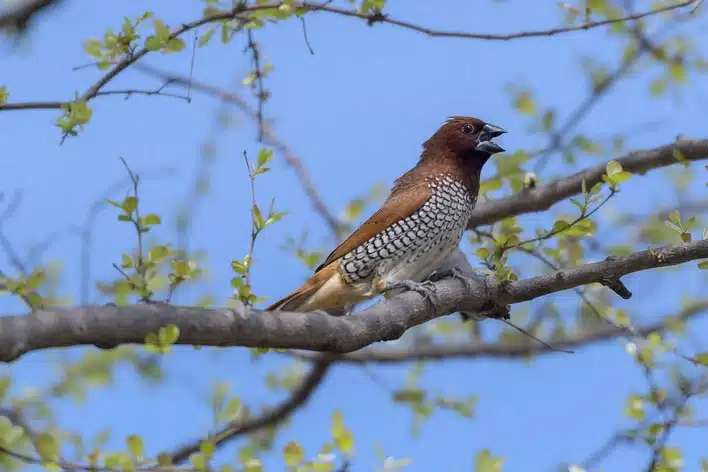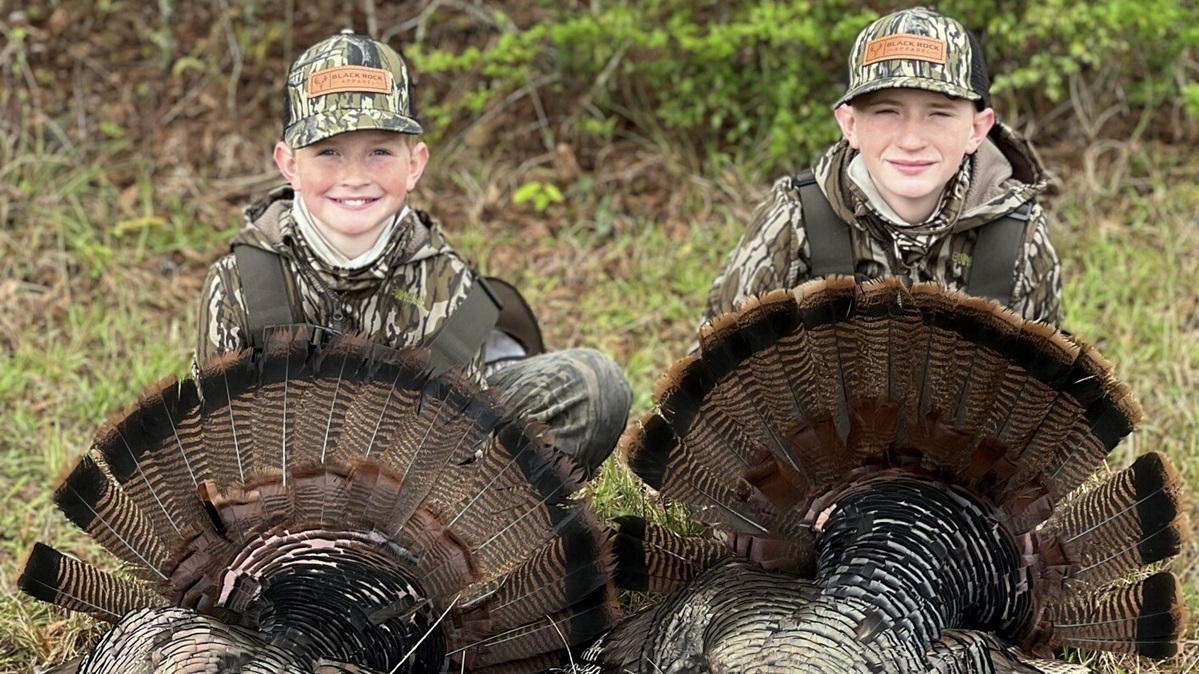Attention Alabama bird-lovers: Beware the scaly-breasted munia

They are tiny, and pretty, but the scaly-breasted munia are not welcome here because they compete with native birds for food, water and nesting resources, as well as possibly carrying disease that could spread to Alabama bird species. (Alabama Cooperative Extension System)
From feral hogs to kudzu to cogongrass, Alabama has its share of problematic non-native or invasive species. Now, a flying edition is making its presence known along the state’s Gulf Coast.
It’s the scaly-breasted munia (Lonchura punctulata), which has established itself in Mobile and Baldwin counties. Also known as the spice finch or nutmeg mannikin, this pretty but unwanted species — a native to southern Asia — has been present in parts of Florida and southern California for decades. Originally descended from escaped or released pet birds, blame a population in Pensacola, Florida, for the scaly-breasted munia now spreading their wings in southwest Alabama.
They join the list of other, non-native birds that are found in Alabama and across the United States; some of them have been around for more than a century. They include starlings, house sparrows, feral pigeons and collared doves.
Problems with the scaly-breasted munia
For such a small and endearing bird, the scaly-breasted munia has the potential to cause a variety of issues. The species can breed rapidly, with populations in Alabama known to lay seven to eight eggs at one time. They have been known to muscle in on the nesting habitat of desirable native birds, such as purple martins. They will also use invasive plants, such as cogongrass and pampas grass, for nesting and feeding, potentially aiding the spread of those unwanted species.
Another potential issue is the large size of the flocks they can travel in. Flocks of several dozen are often present at wild food sources, and even greater numbers congregate around bird feeders. Such large and condensed groups can compete with native birds for food sources, quickly empty feeders and birdbaths, and pose the risk of spreading disease to native species.

Scaly-breasted munia. (Jamie Chavez / National Audubon Society)
Thankfully, the scaly-breasted munia is relatively easy to distinguish from most native Alabama birds. Here’s how to identify them, and some ways to help reduce the impact of these unwelcome invaders:
Size – Scaly-breasted munia are visibly smaller than most other sparrow- or finch-like birds in Alabama, at approximately 4.5 inches long and barely 0.5 ounces in weight.
Coloration – No other bird of the same size has comparable coloration. Adults have a dark, chocolate-brown head, back, wings and tail. The breast is white, with each feather having a black rim. This creates the scaly effect that gives the bird its name. Juveniles are uniformly a paler tan coloration, with the same dark bill as the adults.
Nest design – As an Estrildid finch, the scaly-breasted munia is a skilled nest weaver, usually making an easily recognizable dome nest. The nests are round and have a small entrance angled down and to the side of the nest. This is most easily visible with nests woven into the branches of a tree or tall grass. However, they may also be found in nesting boxes intended for other birds.
Action steps – Do not release pets into the wild, especially non-native species. Report sightings via online trackers such as EDDmapS, iNaturalist or eBird. If large flocks are congregating around bird feeders, remove the feeders; if you see them nesting in purple martin houses or other similar structures, remove the nests.

Scaly-breasted munia. (Kishore Bhargava / National Audubon Society)
A version of this story originally appeared on the Alabama Cooperative Extension System website.





